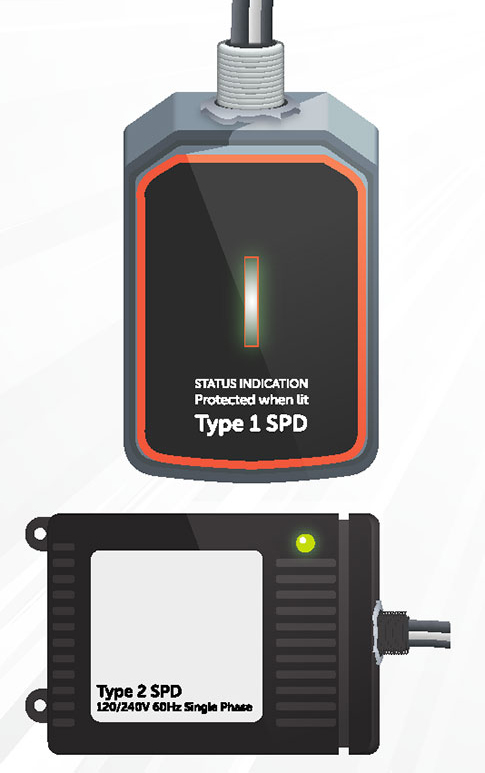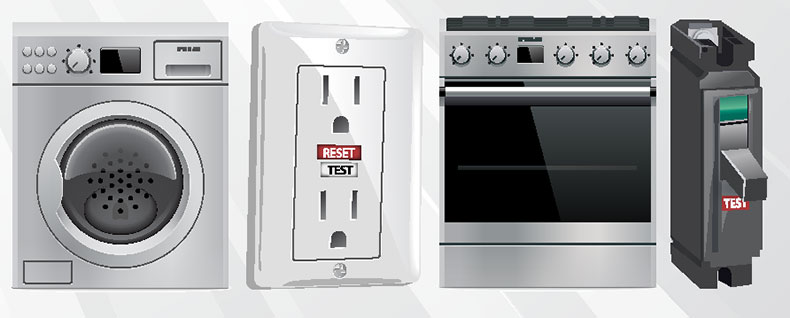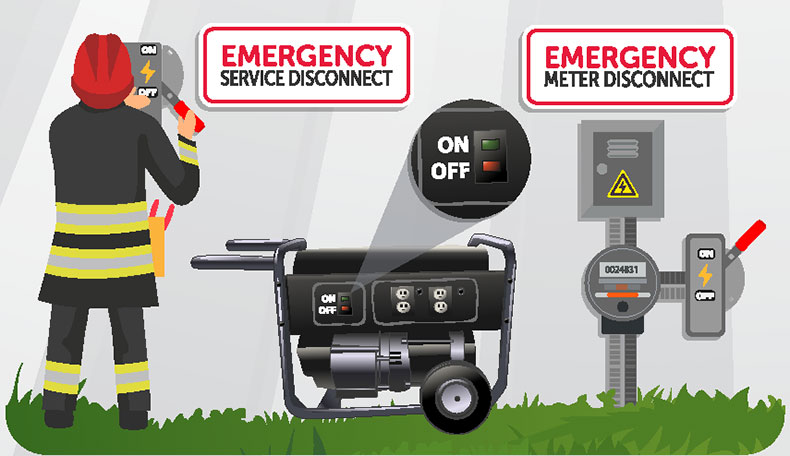The National Electrical Code®, which has been adopted by all SO states, sets the minimum standard for safe electrical design, installation, and inspection to keep people and property protected from electrical hazards. The NEC® is revised every three years using public input, commentary, and technical sessions. With the introduction of the 2020 code, there have been 15 NEC® revisions since 1977, the year the median American home was built.
Surge Protection is Required for Dwelling Units
New and replaced service equipment supplying dwellings are now required to be protected by listed Type 1 or Type 2 Surge-Protective Devices. These protect electrical devices and appliances that may not be protected by point-of-use SPDs. It is estimated that the average home has $15,000 worth of equipment that can be damaged by surges.
Type 1 SPD
Permanently connected SPDs intended for installation between the secondary of the service transformer and the line side of the service disconnect overcurrent device.
Type 2 SPD
Permanently connected SPDs intended for installation on the load side of the service disconnect overcurrent device, including SPDs located at the branch panel.
Ground Fault Circuit Requirements
GFCI protection is now required in all 125-volt through 250-volt receptacles supplied by single-phase branch circuits rated 150-volt or less to ground in eleven* locations of a dwelling. Dryer and range receptacles, common 250-volt receptacles in homes, require GFCI protection.
*Locations listed in NEC section 210.8(A)(1) through (A)(11)
New GFCI requirements include protection in non-dwelling locations and marinas. For more information on new 2020 NEC® requirements visit ESFl.org.
Outdoor Emergency Disconnects for Dwelling Units
Outdoor emergency disconnects are now required for new construction, home undergoing renovation, and homes having their service replaced. This allows first responders to respond to emergencies, such as a house fire, without potential electrical hazards. Emergency disconnects may be a service disconnect, a meter disconnect, or listed disconnect switches or circuit breakers on the supply side of each device disconnect suitable for use as service equipment.





